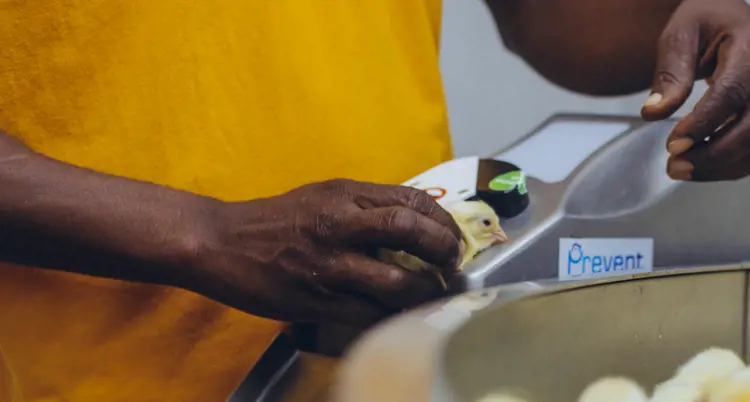Biosecurity Knowledge Article for Kuipers Breeders Day
Biosecurity is a crucial practice in the poultry industry. It involves implementing preventive measures to safeguard birds from diseases and infections. The overall objective of biosecurity is to protect the health and productivity of poultry flocks.

What is Biosecurity?
The term "biosecurity" is derived from the combination of "biology" and "security." It encompasses a range of practices aimed at minimizing the risk of disease transmission to or from a poultry farm. Biosecurity measures safeguard the health of birds, prevent the spread of diseases, and enhance profitability.
What is Biosecurity?
The term "biosecurity" is derived from the combination of "biology" and "security." It encompasses a range of practices aimed at minimizing the risk of disease transmission to or from a poultry farm. Biosecurity measures safeguard the health of birds, prevent the spread of diseases, and enhance profitability.
Benefits of Good Biosecurity
Effective biosecurity practices bring various benefits to poultry farms:
- Reduced risk of disease infection : Biosecurity measures help minimize the likelihood of introducing diseases to the farm.
- Minimization of zoonotic disease establishment: Biosecurity practices prevent the spread of diseases that can transmit from animals to humans.
- Obstruction of disease spread on and off the farm: Implementing biosecurity measures helps control the movement of disease-carrying agents within and outside the farm premises.
- Reduction of challenges to flock productivity: By safeguarding the health of birds, biosecurity enhances their productivity and overall well-being.
- Reduction of disease treatment costs: Biosecurity practices help minimize the need for expensive disease treatment measures, improving overall profitability.
Three Major Components of Biosecurity
Effective biosecurity implementation involves three key components:
- All-In/All-Out System
- This system entails a complete period without any hens on the farm during thorough cleaning and disinfection. Subsequently, only single-age groups are introduced, significantly reducing disease pressure.
- Traffic Control
- Rigorous traffic control is essential to restrict and manage the movement of vehicles and visitors both within and outside the farm. This helps prevent the introduction of disease-causing agents.
- Sanitation
- Thorough disinfection of materials, people, and equipment entering the farm and poultry houses is crucial. This includes disinfecting poultry facilities during the service period.
Pathways for Disease Transmission
Infectious diseases can spread from farm to farm and flock to flock through various means:
- Airborne fomites: Disease-carrying particles can be transmitted through air currents.
- Diseased or carrier birds: Infected birds can shed pathogens through their feces, saliva, and respiratory droplets, potentially infecting other birds.
- Contaminated vehicles: Vehicles entering the farm can carry pathogens from other infected farms, exposing the native flock.
- Egg transmission: Vertical transmission of diseases can occur through infected eggs, with pathogens passing from parent birds to their offspring.
- Carcass disposal: Improper disposal of dead bird carcasses can facilitate the spread of pathogens.
- Impure water: Contaminated water, such as surface drainage water, can harbor pathogens and spread diseases.
- Rodents, wild animals, and free-flying birds: These external pests can carry pathogens and introduce them to the farm.
- Insects: Insects that come into contact with infected birds can act as vectors, spreading diseases.
- Visitors' clothing and shoes: Visitors moving from flock to flock can inadvertently carry pathogens on their shoes and clothing, potentially infecting other flocks.
- Contaminated premises: Contact with contaminated surfaces, such as equipment or tools, can spread pathogens.
